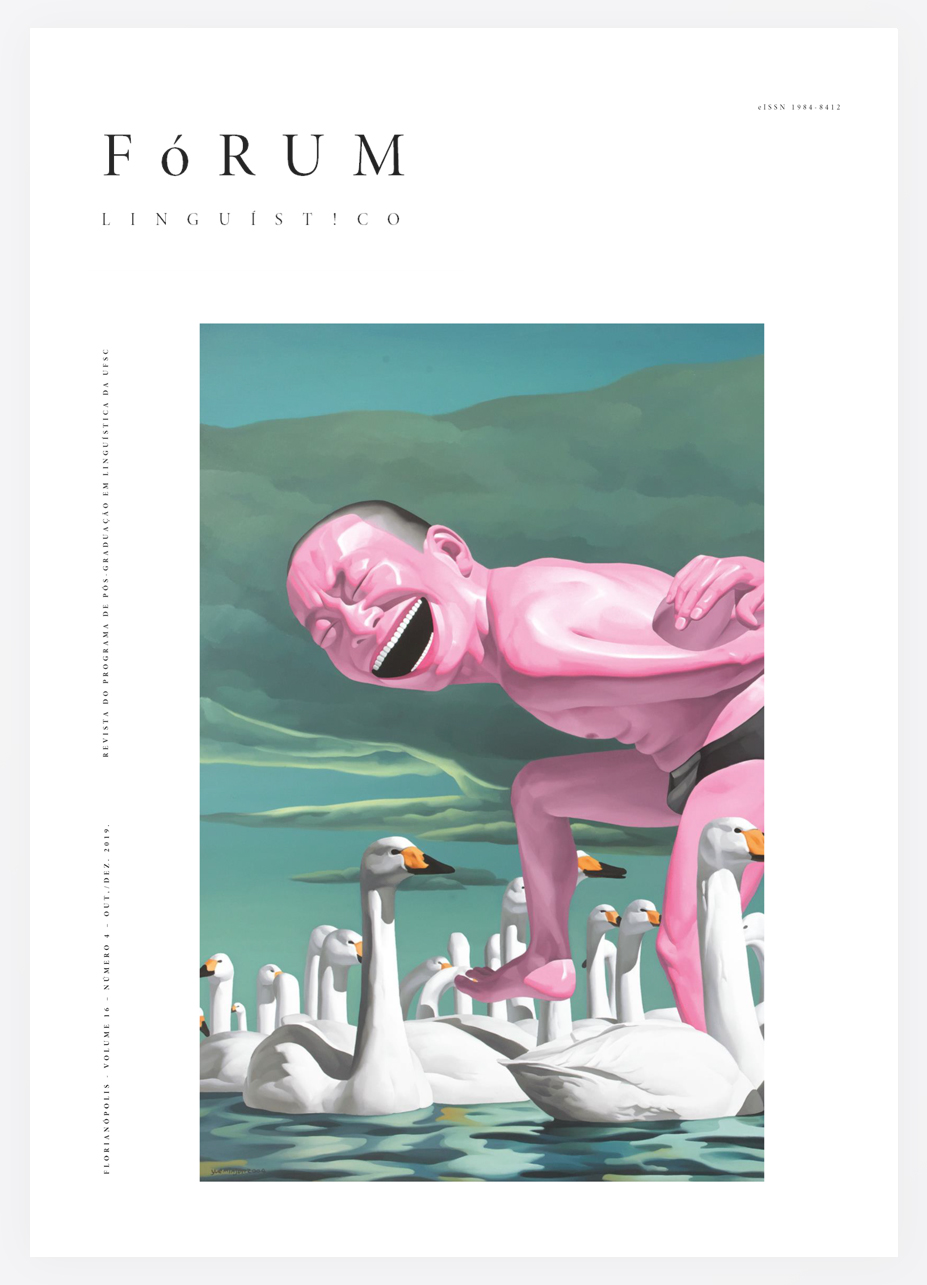A proposal for a unified theory of nominal and verbal factors conditioning the differential object marking
DOI:
https://doi.org/10.5007/1984-8412.2019v16n4p4028Abstract
My main question is: from a typological point of view, what is the most significant semantic generalization associated with the differential marking of the object (DOM)? My proposal is that DOM is motivated by the presence of highly individuated portions of matter and of time in transitive sentences. It is used here a larger concept of individuated portions, encompassing both the notion of complete events and the individuation of referents. Just as in the domain of matter there are bounded objects, in the domain of time we find bounded events (PINKER, 2008). This larger concept of individuated portions allows a better explanation of DOM. There is no alternative trying to unify the different semantic motivations for the use of DOM. The relation between the semantics of the verbs and the semantics of the nouns remains unknown. My proposal is that these different factors can be unified in a single theory.
References
AIKHENVALD, A.; DIXON, R; ONISHI, M. Non-canonical markings of subjects and objects. Amsterdam: John Benjamins, 2001.
AISSEN, J. Differential object marking: Iconicity vs. Economy. Natural Language and Linguistic Theory, v. 21, n. 3, p. 435-483, 2003.
BACH, E. On Time, Tense, and Aspect: An Essay in English Metaphysics, in Peter Cole (ed.). Radical Pragmatics. New York:
Academic Press, 1981, p. 62–81.
BACH, E. The algebra of events. Linguistics and Philosophy, v. 9, p. 5-16, 1986.
BOSSONG, G. Animacy and markedness in universal grammar. Glossologia, v. 2, p. 7-20, 1983.
BOSSONG, G. Le marquage différentiel de l’objet dans les langues d’Europe. In: FEUILLET, J. Actance et valence dans les langues de
l’Europe. Berlin: Mouton de Gruyter, 1998. p. 193-258.
COMRIE, B. Aspect. Cambridge: Cambridge University Press, 1976.
COMRIE, B. Language universals and Linguistic Typology. Chicago: University of Chicago Press, 1981.
CROFT, W. Typology and universals. Cambridge: Cambridge University Press, 1990.
CROFT, W. Verbs: aspect and causal structure. Oxford: Oxford University Press, 2012.
CYRINO, S. Reflexões sobre a marcação morfológica do objeto direto por a em português brasileiro. Estudos linguísticos e literários,
v. 58, p. 83-103, 2017.
HASPELMATH, M. Role-reference associations and the explanation of argument coding splits. lingbuzz/004047, to be published.
HOPPER, P.; THOMPSON, S. Transitivity in grammar and discourse. Language, v. 56, n. 2, p. 251-299, 1980.
JACKENDOFF, R. Parts and boundaries. Cognition, v. 41, p. 9-45, 1991.
IEMMOLO, G. Symmetric and asymmetric alternations in direct object encoding. STUF – Language Typology and Universals, v. 66,
p. 378–403, 2013.
LISSNER, P. Chi-thinking: chiasmus and cognition. 2007;Doctoral Dissertation - University of Maryland, College Park, 2007.
KRIFKA, M. The origins of telicity. In: ROTHSTEIN, S. (ed.). Events and grammar. Dordrecht, Kluwer Academic Publishers, 1998.
p. 197–235.
NᴁSS, A. What markedness marks: the markedness problem with direct objects. Lingua, v. 114, p. 1186–1212, 2004.
PALMER, F. Grammatical roles and relations. Cambridge: Cambridge University Press, 1994.
PINKER, S. The stuff of Thought: language as a window into human nature. New York: Penguin Books, 2008.
ROSCH, E. & MERVIS, C.B. Family resemblances: studies in the Internal Structure of Categories. Cognitive Psychology, v. 8, p. 383-
, 1975.
SCHWENTER, S.; NUNES, L. L. Uma entrevista com Scott Schwenter. ReVEL, v. 16, n. 30, 2018.
TORREGO SALCEDO, E. El complemento directo preposicional. In: BOSQUE, I.; DEMONTE, V. (ed.). Gramática descriptiva de
la lengua española. Las construcciones sintácticas fundamentales. Relaciones temporales, aceptuales y modales. v.2. Madrid: Espasa
Calpe, 1999; p. 1779–1805.
WITZLACK-MAKAREVICH, A.; SERŽANT, I. Differential argument marking: Patterns of variation. In: SERŽANT, I.;
WITZLACK-MAKAREVICH, A. The diachronic typology of differential argument marking. Berlin: Language Science Press, 2018.



